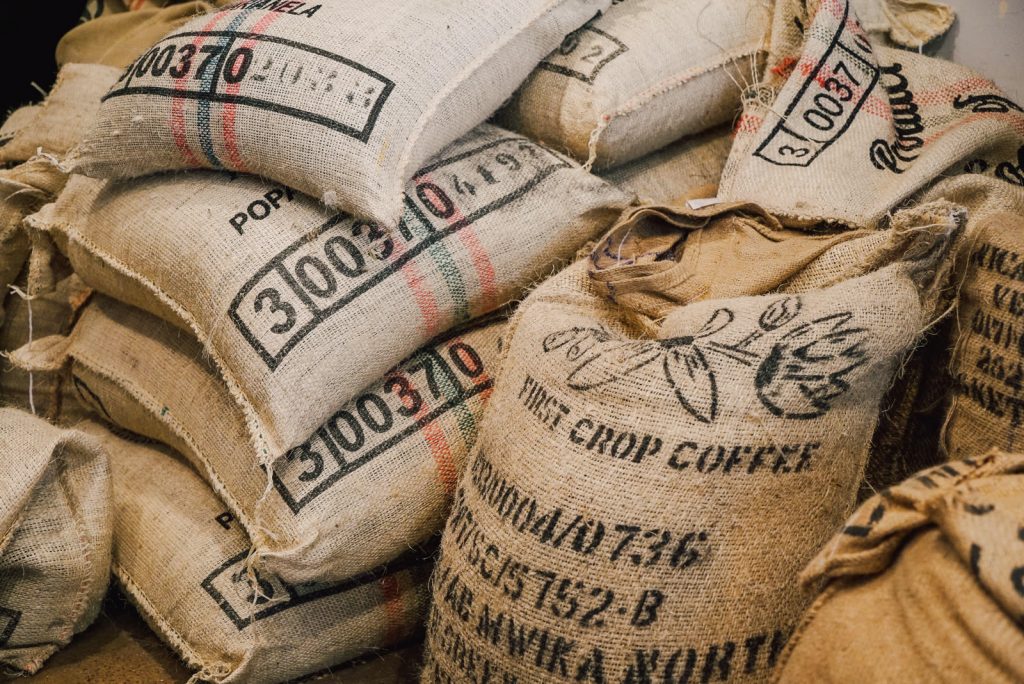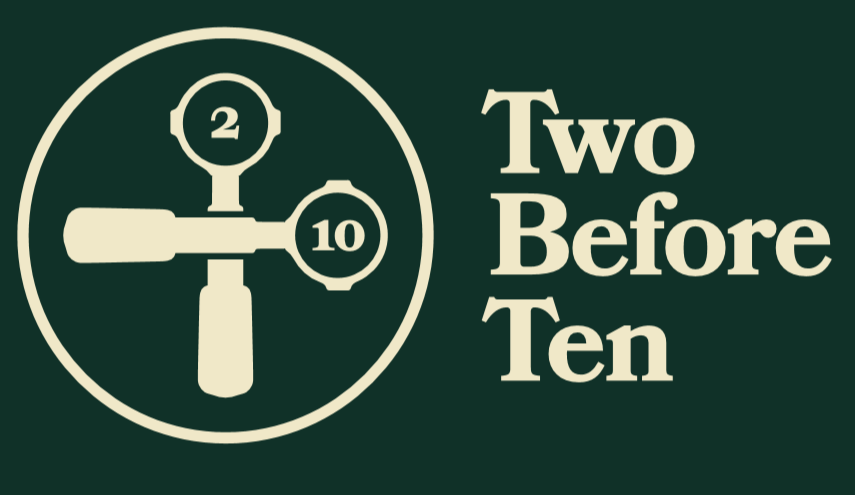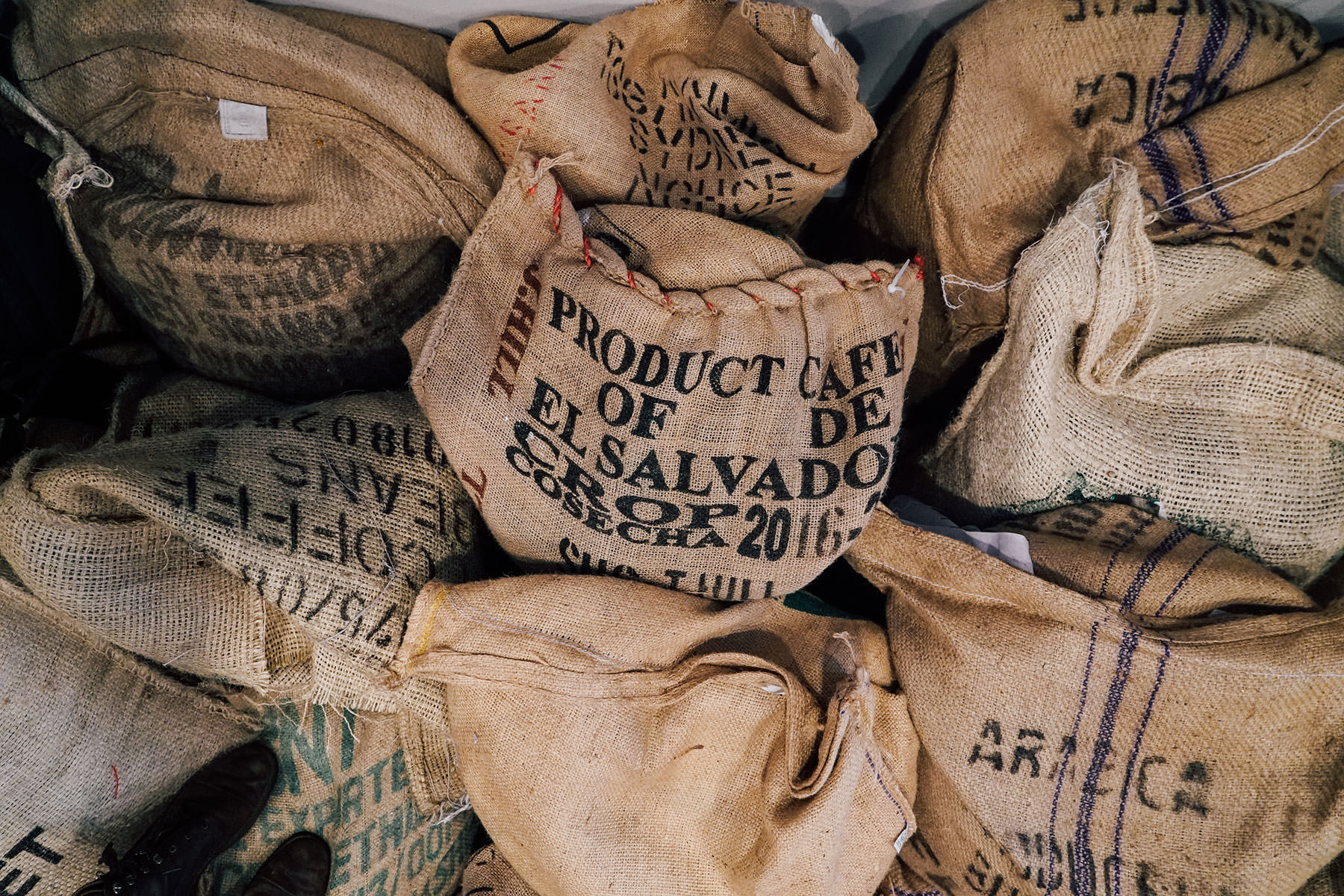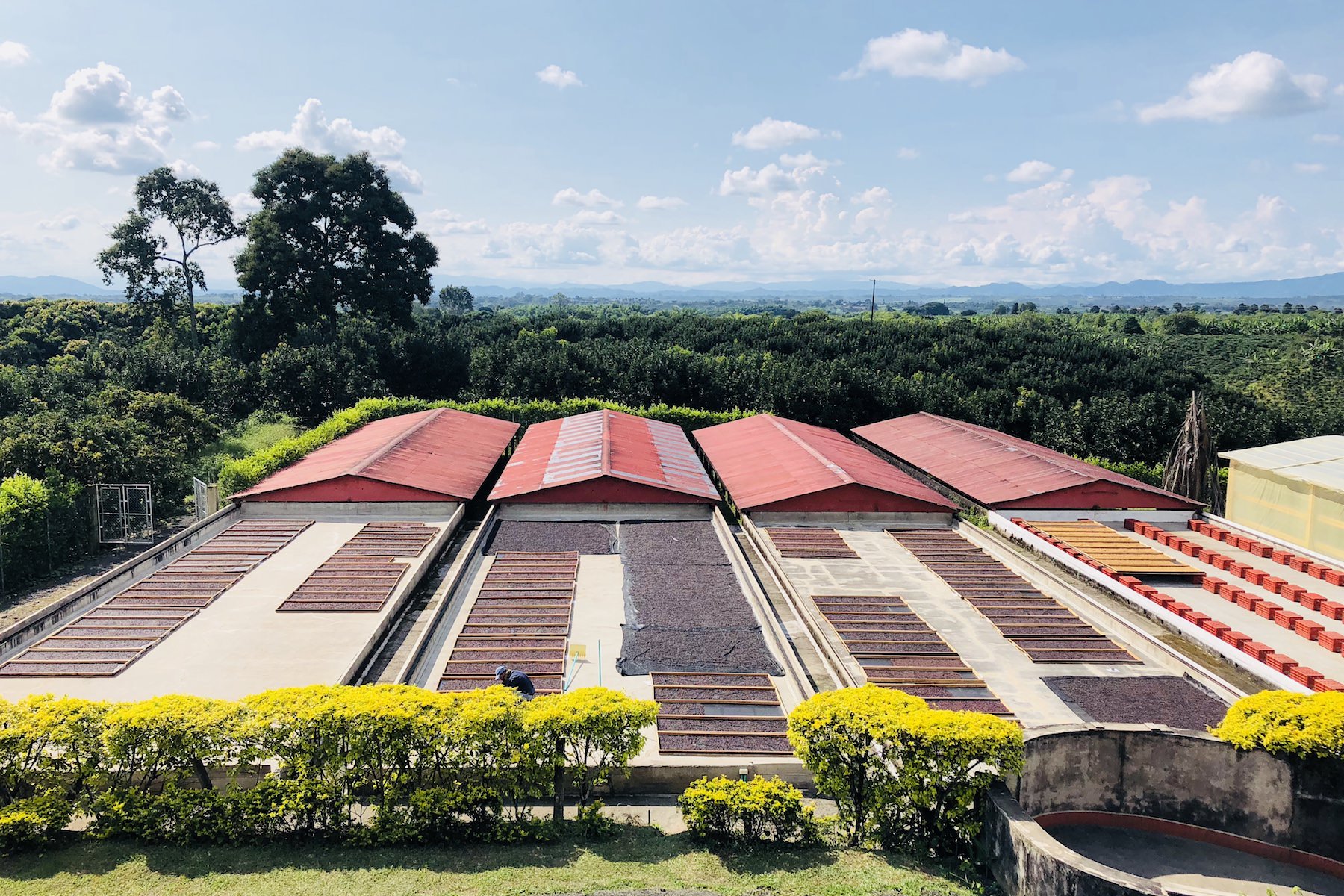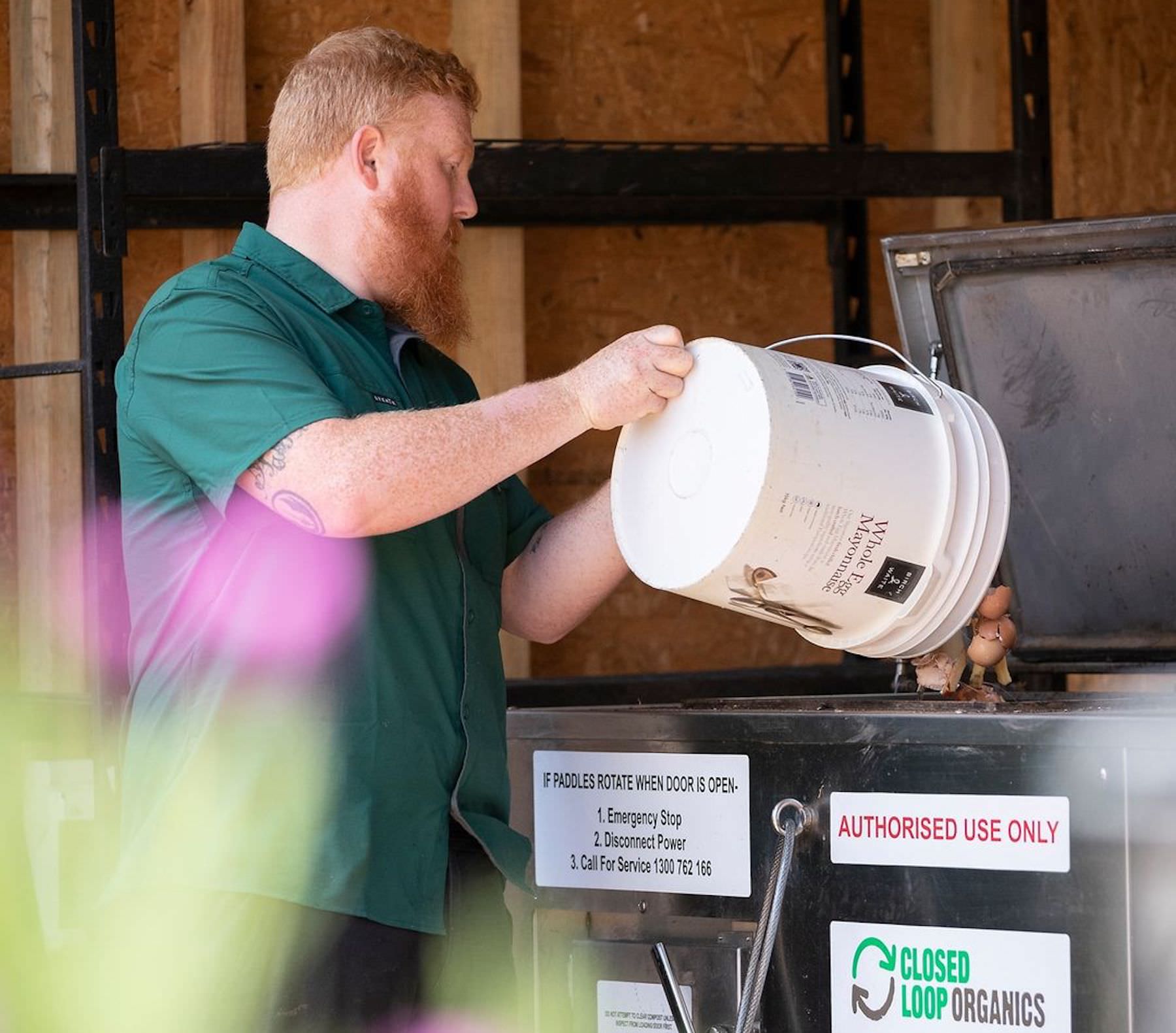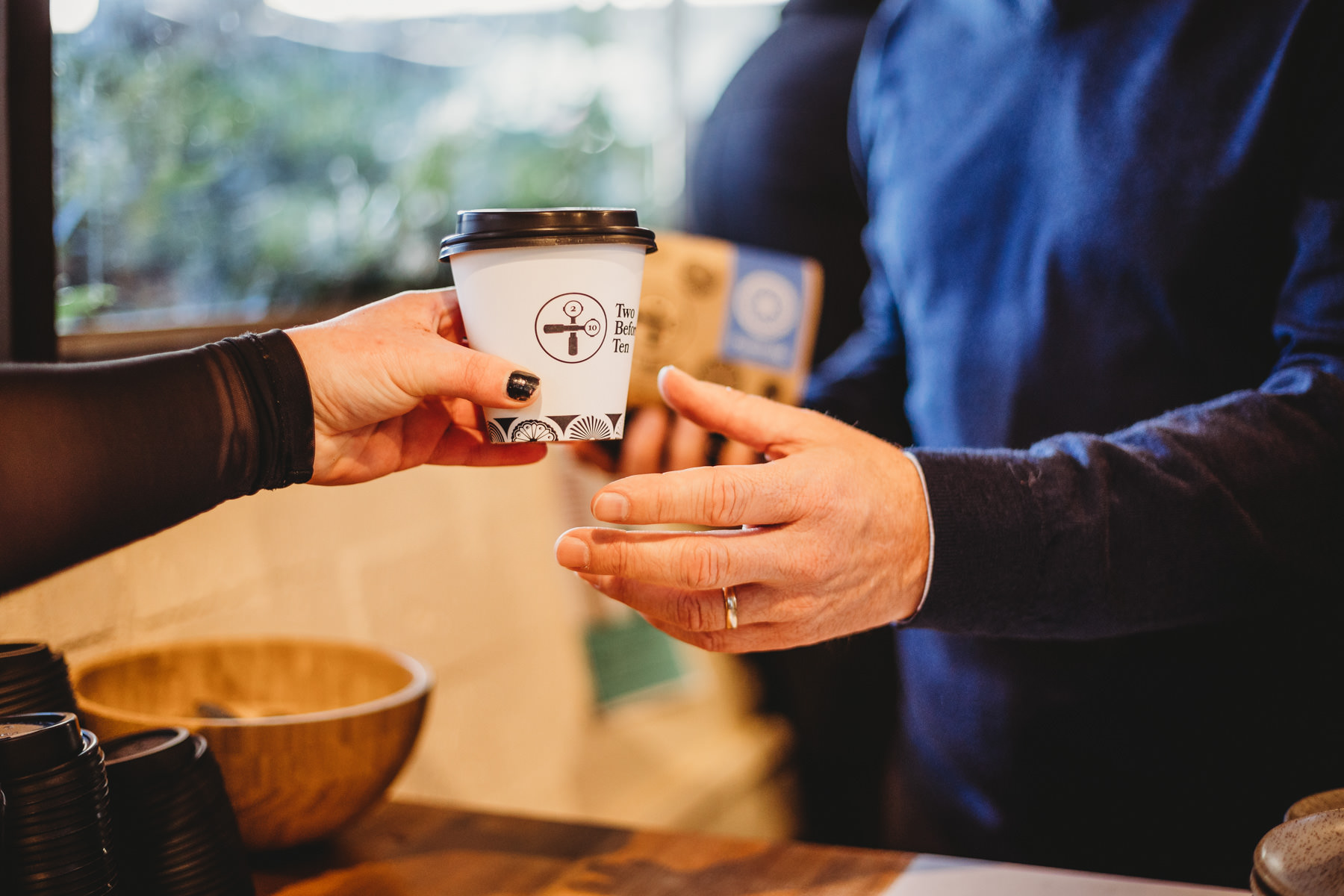7 ways to upcycle hessian coffee bags
It's an image synonymous with coffee roasting. Big hessian bags filled with coffee beans, the printed words and pictures representing coffee farms from across Africa, Asia and the Americas. Hessian or burlap bags are still the default choice for shipping coffee around the world, but once the sacks have been opened and coffee beans roasted, the hessian bags are no longer needed.
Thankfully there are a myriad of ways to repurpose hessian coffee bags and save them from going to waste. The natural fabric is course and breathable, making it useful for both DIY craft projects and as an alternative to plastic in the garden. Here are seven ideas for upcycling hessian sacks that we've found useful.
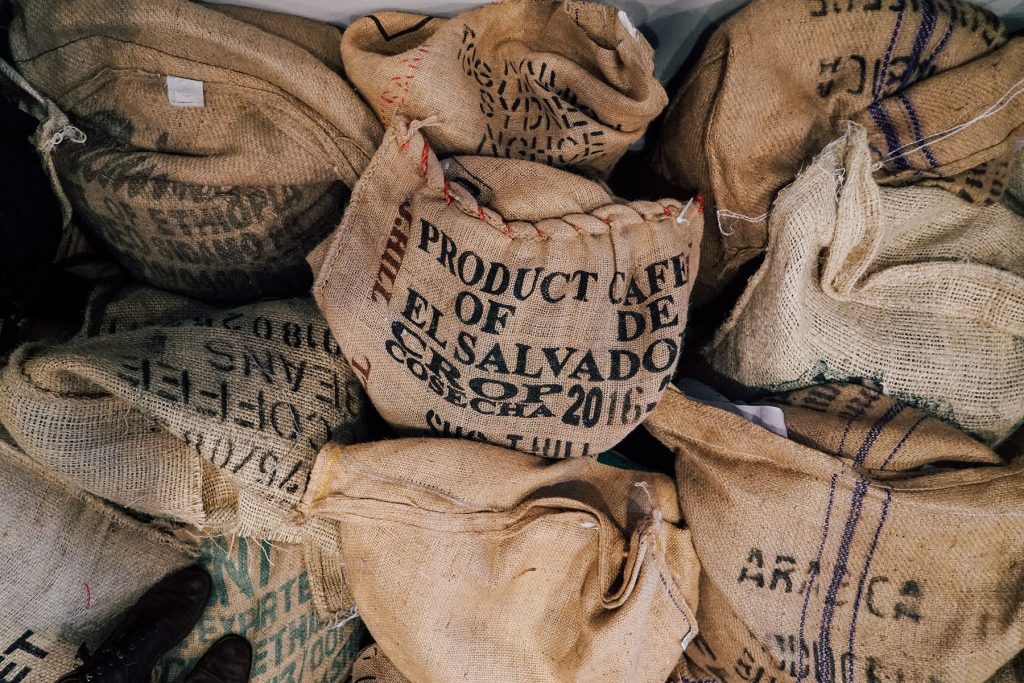
Cleaning the jute
In most cases you'll want to make sure the coffee bag is clean before using it. Hessian and burlap are made from the jute plant, which looks similar to bamboo. The fibres are harvested, processed with running water (retting), stripped and ribboned, then woven into the sacks we are familiar with. When unroasted coffee is stored in these bags a fine, green dust collects on the inside. After long term storage the hessian can end up smelling musty and stale.
The simplest method of cleaning hessian bags is to shake out and hang to air in the breeze. For any garden uses this should be sufficient. You can also sprinkle baking powder over the surface to soak up any smells. When preparing the coffee bags for crafts or home décor you may prefer to hand wash in a tub with soap. Jute is a course and unfinished fibre, the origin of the word burlap literally translates to "course cloth," so washing it will result in thousands of tiny strands floating loose. If you choose to thoroughly wash it, do not add it to the washing machine with other clothes you love!
Recycled hessian bag planter pots
Old coffee bags are ideal for use in the garden. They're strong, lightweight, breathable, biodegradable and a great option for DIY planter pots. For smaller plants, one hessian sack can be cut and sewn into multiple pots. Plant with vegetables, herbs or flowers and use as an alternative raised bed garden.
Jute bags are most useful when it comes to larger plants and small trees. Fill the bag with the appropriate potting mix and plant the tree into the centre. The hessian will allow free drainage while keeping the soil moist. When you're ready to transfer to the garden, plant the entire thing, bag and all. In this way the roots wont be disturbed during transplanting and can penetrate through the hessian as they grow. Beware that the base of the bag can start to biodegrade in as little as two months. So if you're planning to later move it, place a flat piece of wood underneath from which to lift the planter pot when it's time to transplant.
DIY jute tote bag
Creating a hessian tote bag is a fun project for a newbie sewer. Afterwards you'll have a strong, durable bag that can be used for shopping, markets, the beach or a daily handbag. You only need one coffee sack to make the tote, which will be cut into 2 large and 3 small pieces of fabric for each surface, plus some handles. To achieve a more finished look it's a good idea to add an inner lining using linen, cotton or canvas fabric. This will protect whatever you store inside from collecting stray fibres. This DIY project should take only a few hours if using a sewing machine. Follow along with the video below for more detail.
Build your own dog bed

Jute makes an excellent dog bed - easy to install and quick to swap out when it gets too old. Most large pet stores stock the steel frames for raised dog beds and sell the hessian sacks to go with them. However, these can be created for free with only a few minutes work. After collecting your hessian coffee bag, cut a small hole in each of the bottom corners. Pull the bag over the frame and line up the cut holes with two of the feet. Then staple or sew the large opening shut so the jute is taught across the bed.
You'll want to use the medium sized steel frames when repurposing coffee bags, as anything larger will be a challenge to find a big enough bag. The dimensions for a flat 60kg hessian coffee sack are usually 102cm by 66cm. This easy swap can save you around $15 a piece.
Make hessian cushions
Years ago a Twobie staff member made cushions for the Aranda café using old coffee bags from Colombia. They have held up amazingly to daily use and are still in excellent condition. This is another project that's easy for a novice sewer to master and can also be hand stitched if you've got time to spare. All you need is some cushion stuffing, thick thread and 2 square pieces cut from a used hessian sack. Lay one piece on top of the other and stitch all the way around the edges, leaving a small hole in one corner. Turn the cushion cover inside out, fill evenly with stuffing and carefully stitch the corner shut. Up-cycled cushion success!
Other DIY craft ideas utilising hessian bags include gift wrapping, upholstering furniture, lining a coffee tray and the appropriately named coffee bean bag.
Storing food in old coffee sacks
The loose, breathable weave of burlap makes it ideal for storing produce. Allowing air to circulate around certain fruits and vegetables helps prevent rotting, bruised peels and premature ripening. Crops such as potatoes, onions, garlic, apples and pears can all be stored long term in burlap bags. Keep onions and garlic inside a hanging jute bag in a dark place, and stack potatoes, apples and pears inside crates with layers of jute fabric between them. Remember to keep potatoes stored separately from other fruits and veg to prevent premature spoiling.
Recycling hessian for weed mats
Landscape fabric is commonly used in gardens throughout Australia as a weed barrier. The name can be misleading, as landscape fabric is made from synthetic polyester or polypropylene and not at all biodegradable. Due to the nature of the material it also repels a lot of the water that we want to soak into our gardens, instead flowing over the top and away from your plants.
Luckily there is a much better option that is both biodegradable and free. Burlap bags are perfect for laying over gardens. Cut the bag at the seams to cover a large area, or leave as is for a thicker weed cover. Make sure any plastic tags are removed before using in the garden. The jute fabric will soak up moisture and hold it in place where it's needed most. When covered with a thick layer of mulch it works as an excellent weed barrier. And after a few years out in the elements the hessian will start to rot away, adding organic matter directly to the soil.
Burlap bag compost cover
Aeration and moisture are both vital for compost. Repurposed hessian coffee bags can help maintain a healthy environment for beneficial compost microbes to break down organic matter by keeping moisture in while letting air flow. Particularly in the often dry Canberra climate we don't want to be wetting down our compost every other day. Line DIY pallet compost bins with burlap to keep moisture in and pests out. Or simply place a hessian sack directly over the top of your compost pile as an easy lid.
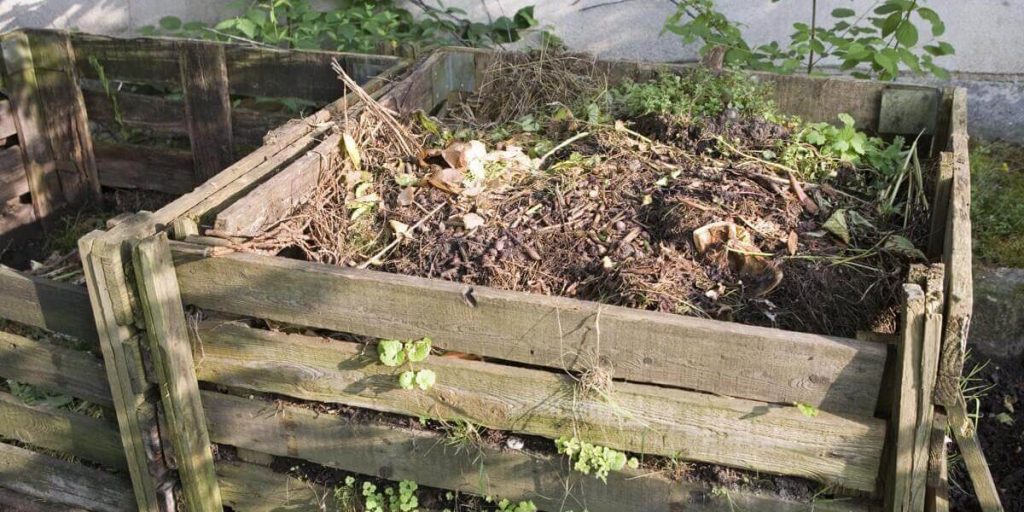
Where to find hessian coffee sacks
Depending on the size of the operation, roasters can go through dozens of hessians bags each day. Some may choose to sell, donate or even throw theirs away, but the Two Before Ten roastery has always given ours away to customers. You can usually find a few at the Aranda café, otherwise chat to a staff member and we can arrange for some to be delivered to your local TBT for pick up when available. Keep in mind they're very popular in early spring when Canberrans are getting back into the gardens, so maybe order ahead!
